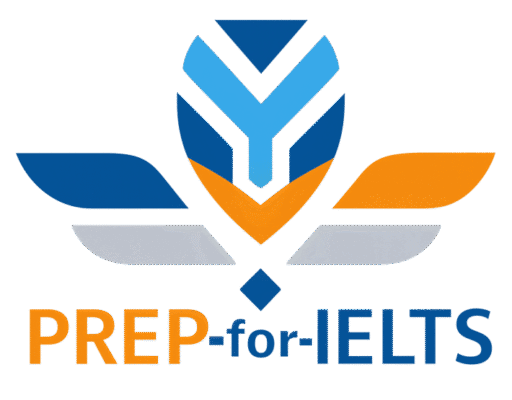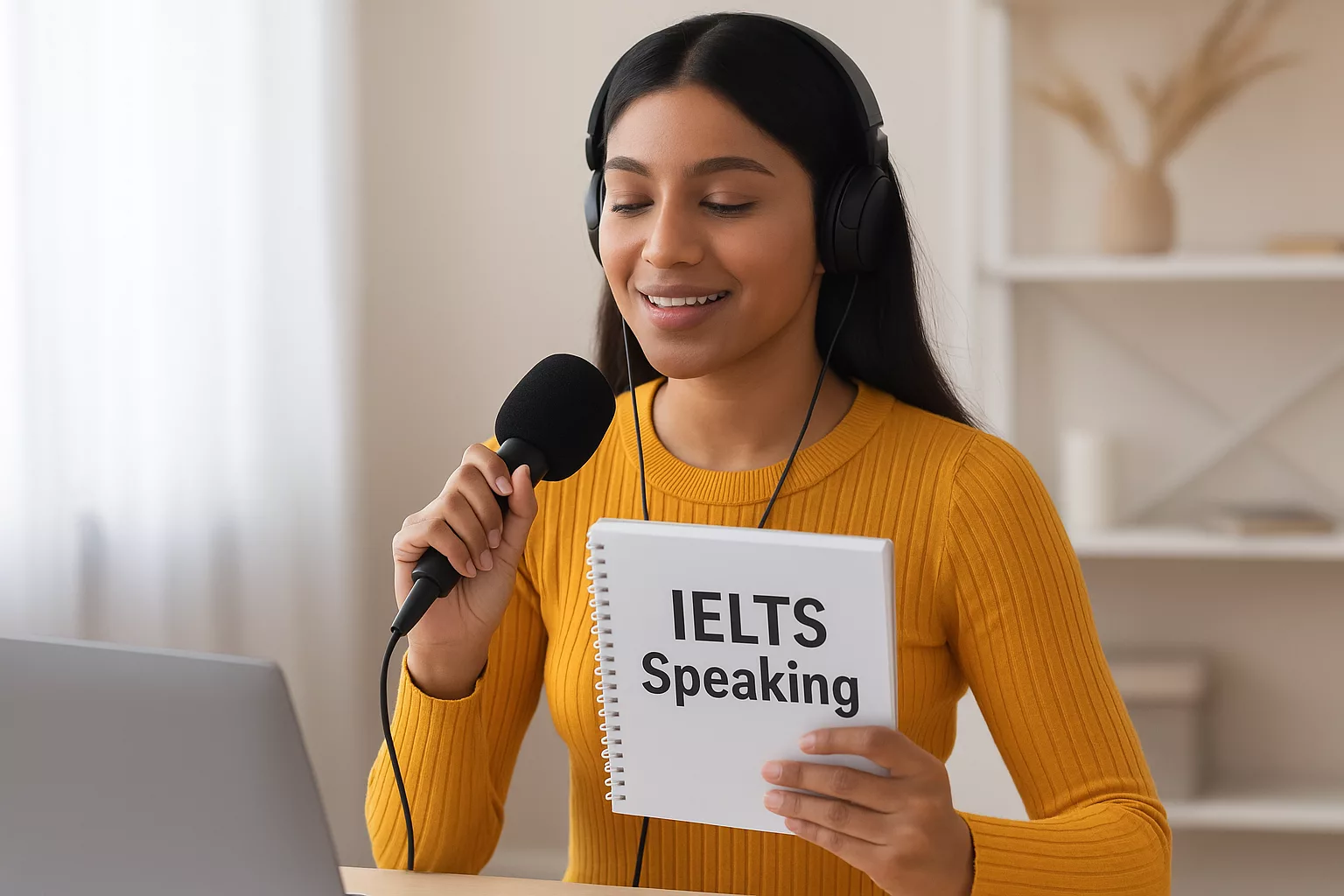Practicing for the IELTS Speaking test can really give your confidence a boost and help you respond naturally during your exam. A lot of learners worry about what kinds of questions they’ll get, how to structure their answers, and what examiners are truly looking for. In this article, I’ll walk you through a realistic IELTS Speaking practice test with some detailed answers. I’ll also break down the key techniques behind each answer, so you can adapt these methods to your own speaking, instead of just memorizing scripts.
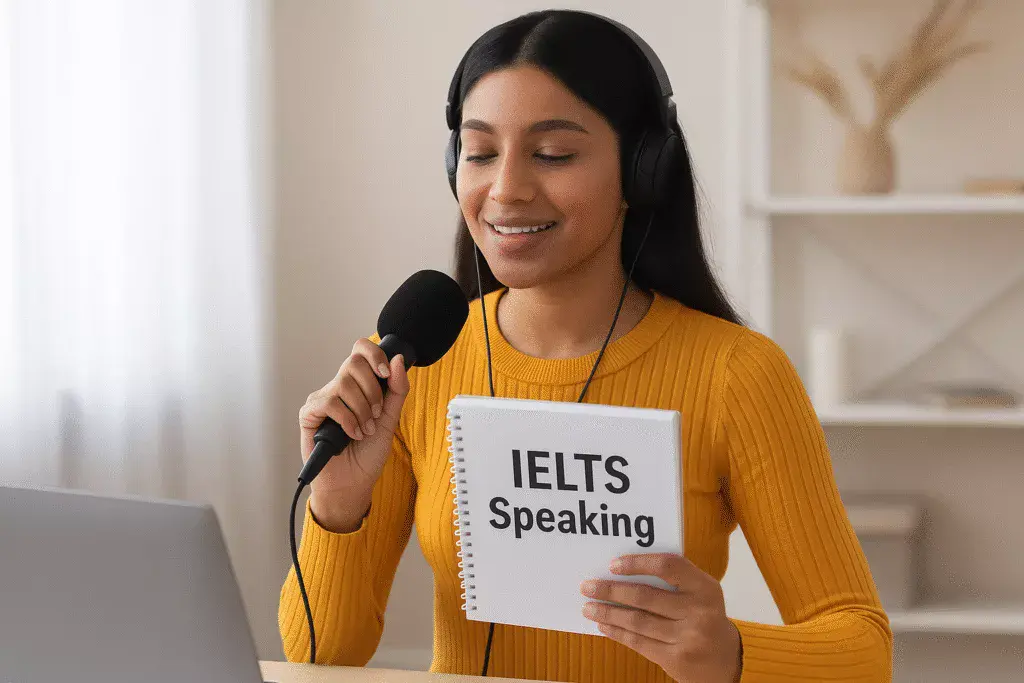
IELTS Speaking Practice Test Format and What to Expect
The IELTS Speaking section is made up of three parts and takes about 11 to 14 minutes. You meet with an examiner and answer questions about familiar topics such as your studies, home, or hobbies. Then, you give a longer talk, and finally, you have a deeper discussion related to broader themes.
- Part 1: Introduction and Interview – Here you answer questions about yourself and everyday topics.
- Part 2: Long Turn – You speak for up to two minutes on a prepared topic.
- Part 3: Discussion – This involves exploring more abstract or complex questions with the examiner.
Knowing how the test is set up lets you focus your practice, time your answers, and avoid surprises on test day.
Practice Test: Realistic IELTS Speaking Questions and Answers
Part 1: Introduction & Everyday Topics
Question: Where are you from?
Sample Answer: I’m originally from Hanoi, which is in the northern part of Vietnam. It’s a busy city, but I really like the atmosphere, especially in the old neighborhoods.
Why this works: Simple, natural phrasing plus a bit of extra detail. I don’t over-explain but I give more than just a one-word answer.
Question: Do you work or study?
Sample Answer: Right now, I’m studying at university. I’m in my third year of business administration. I really enjoy some of my classes, especially marketing, because we do lots of group projects and that keeps things interesting.
Why this works: Shares what I do, gives context, and adds a reason for my interest. This shows natural fluency and a willingness to say more than just the basics.
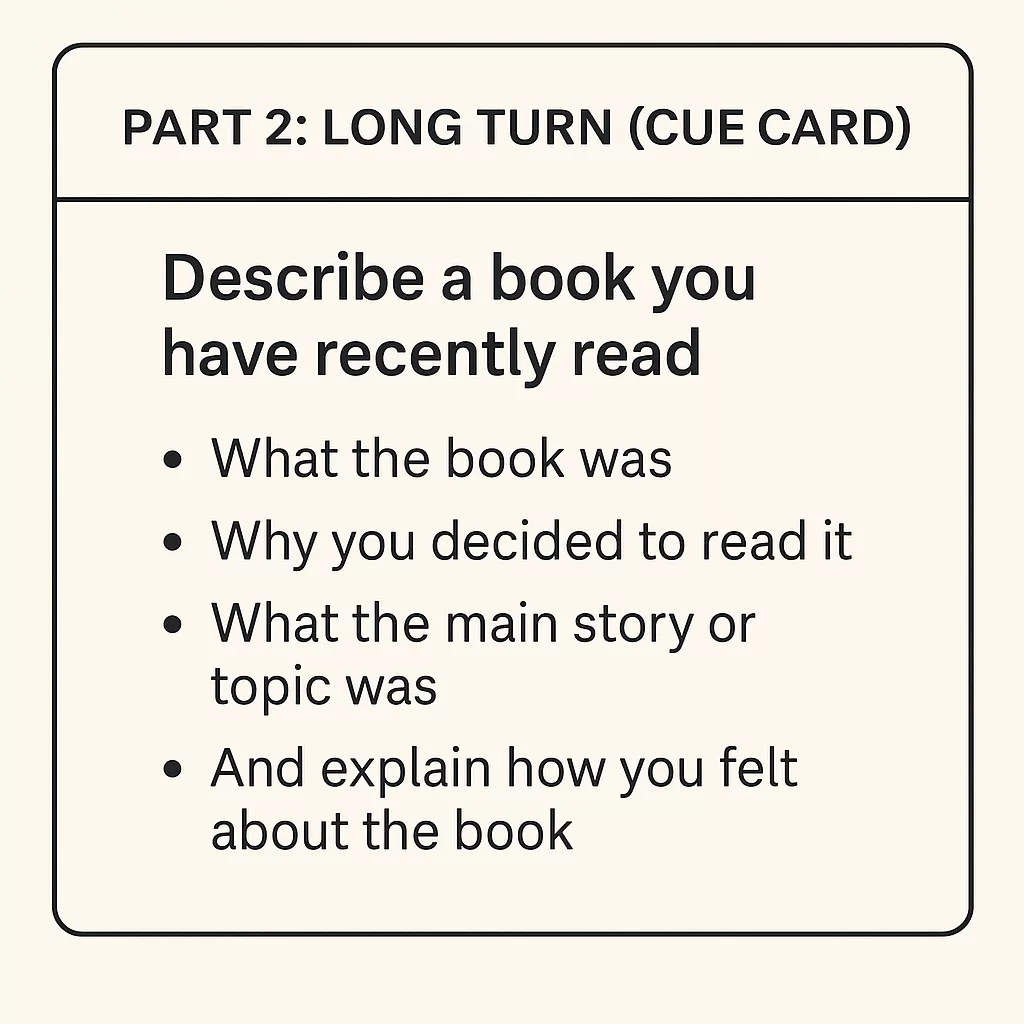
Sample Answer: I want to talk about the last book I read, which was “Atomic Habits” by James Clear. I chose to read it because my friend recommended it to me. He knows I’m interested in learning how to build better daily routines. The book shares how small changes in habits, over time, can really lead to big results. For example, the author explains some practical techniques for making good habits easier and making bad habits trickier, so you do them less. I liked that the tips were useful and not just ideas without real examples. After finishing the book, I felt motivated to try setting up new habits myself, and I’ve already started getting up earlier in the mornings so I can fit in some exercise before starting my day. That has made me feel more productive and happy with my routine.
Why this works: I address each bullet point, use linking phrases like “For example,” and include topic vocabulary such as “daily routines” and “small changes in habits.” I also show feelings and a personal experience instead of just memorized language.
Part 3: Discussion
Question: Do you think reading books is becoming less popular these days?
Sample Answer: It seems like fewer people read books for fun now because so much information is online, or people spend more time on social media when they have free time. Still, I think some people truly enjoy reading, especially when they want to relax and take a break from their screens. Going to a quiet spot with a book can be a really calming experience even today.
Why this works: The answer paraphrases the question, uses phrases like “it seems like,” gives an opinion, and offers reasons and examples rather than just a yes or no.
Question: How might technology change the way people read in the future?
Sample Answer: I think technology could make reading even more accessible because you can already download books on devices like e-readers and tablets in just a few seconds. In the future, there may be even more interactive books, or people could use virtual reality to become part of the story. But some traditional readers might still prefer the feeling of holding a paper book in their hands, which is something digital books can’t quite replace.
Why this works: This answer includes speculation (“could,” “may be”), gives examples, and shares a balanced viewpoint.
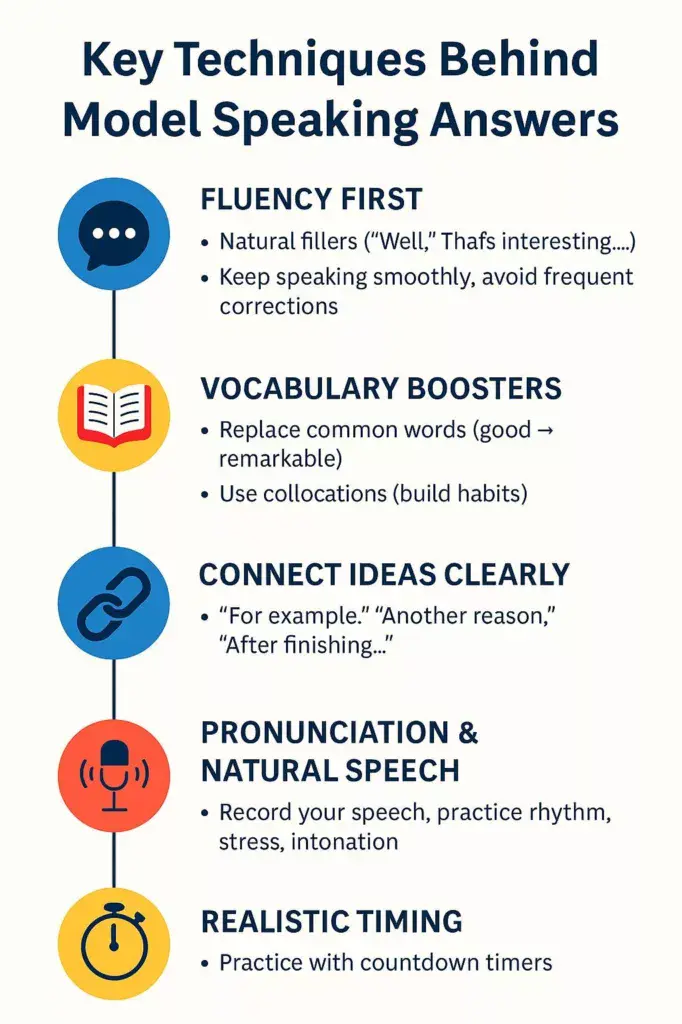
Answers Should Teach How, Not Just What
- Don’t just repeat the content.
- Break down why each answer works.
- For instance, phrases like “For example,” “I found it really helpful,” and “It seems like.” make responses sound more natural and fluent.
Fluency Is More Valuable Than Perfection
- Pausing too much, over-correcting, or getting stuck on grammar can cost marks.
- Use fillers like “Well,” or “That’s a tricky question” when I need a moment to think.
- Sounding smooth is often more important than being perfectly correct.
Building Up a Great Range of Vocabulary
- Examiners listen for vocabulary related to the topic.
- Swap out boring words for better ones;
- atmosphere” instead of “environment,”
- “techniques” instead of “ways.”
- try for a few upgraded words in each answer, but not so many that things sound unnatural.
Linkers and Organization
- Using transition words (“Another reason is,” “For example,” “After finishing the book…”)
Pronunciation and Speaking Naturally
- IELTS Speaking is graded partly on pronunciation.
- Record yourself imitating the rhythm and word stress—not just repeating the words.
- Listening back helps to make sure delivery is clear and relaxed,
Practicing Under Real Test Conditions Matters
- Timing is crucial.
- Managing your time under pressure.
- Helps avoid running out of time or saying too little.
Extending and Supporting Answers
- Music helps me relax, especially in the evenings when I listen to jazz.
- Adding more detail keeps the conversation flowing
- Gives examiners more language to assess.
Handling Abstract and Challenging Questions
How might technology affect family life?
🟢 Answer: “It might bring families closer together because of video calls, but perhaps it could also mean less face-to-face time.”
- Give a balanced reply.
- Words like “might,” “could,” or “possibly” provides thoughtful, speculative answers.
Using Authentic, Adaptable Model Answers
- A lot of practice materials online show perfect native level answers.
- Focus on clear, realistic answers between Band 6.5 and 8.
- Don’t need to sound like a textbook.
Final Important Reminders for IELTS Speaking Practice
- Don’t just copy model answers. Try to understand the structure and techniques used.
- Practice with real test timings.
- Work on pronunciation as well as words; record yourself and listen back whenever possible.
- Add explanations and examples to support your answers.
- Take on a few abstract or speculative questions, so you’re ready for anything on test day.
- Use model answers as a base, not a script—adapt them so you sound natural and confident during your exam.
Frequently Asked Questions
How can I improve my fluency for IELTS Speaking?
Practice speaking out loud without stopping to correct every tiny mistake. Use of fillers and linking words to keep going while thinking of your next idea. Recording your answers and listening back really helps you track your progress and keep improving.
Are native speaker model answers helpful?
Some are, but it helps more to use model answers that are closer to your level, about Band 6.5 to 8. This way, you don’t feel discouraged, and can use practical techniques to improve.
How do I practice for the speaking timing?
Use countdown timers for each part, especially for the Part 2 long turn. Following the real timings lets you get ready for the pressure of the actual test and helps you practice staying on topic and organized.
